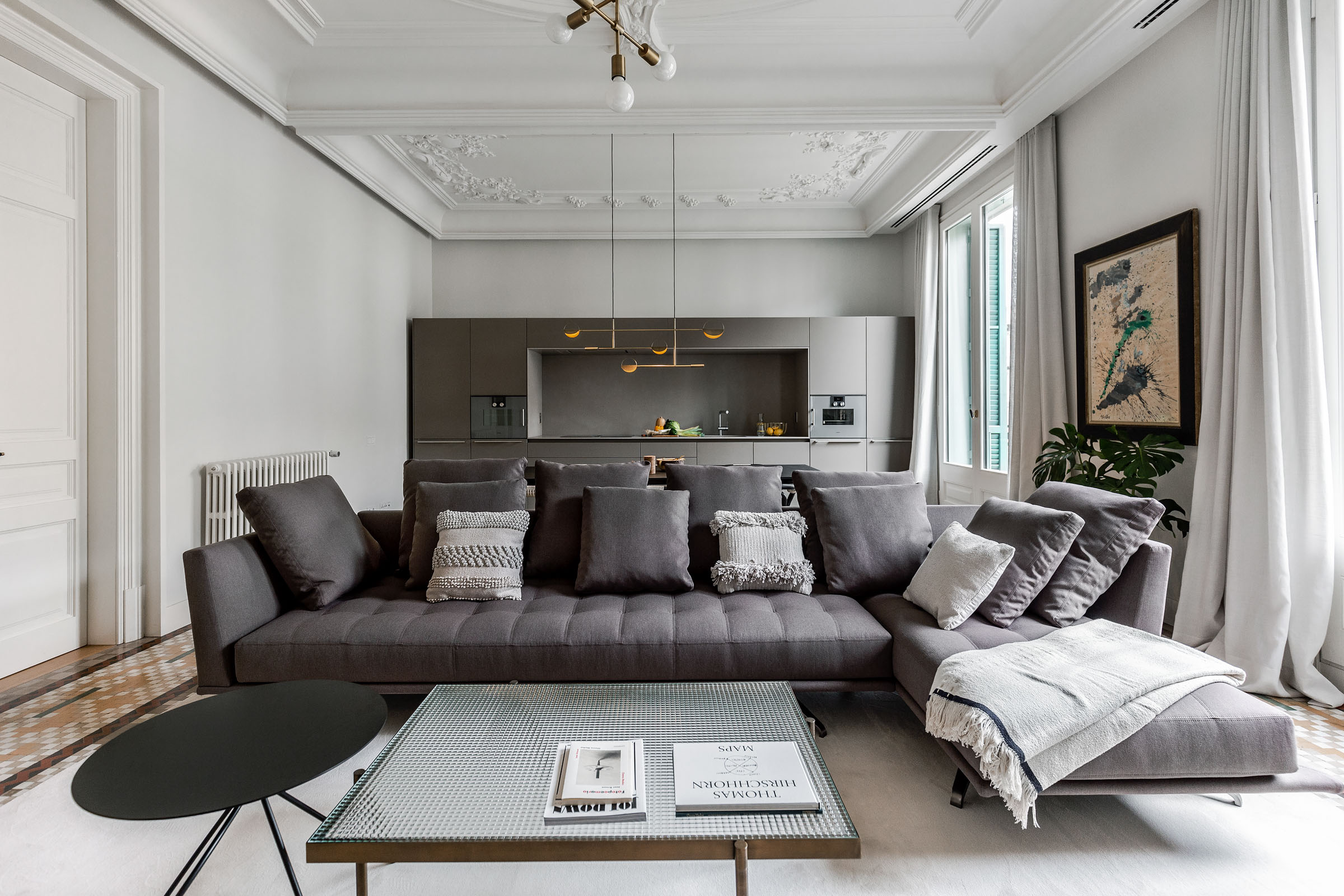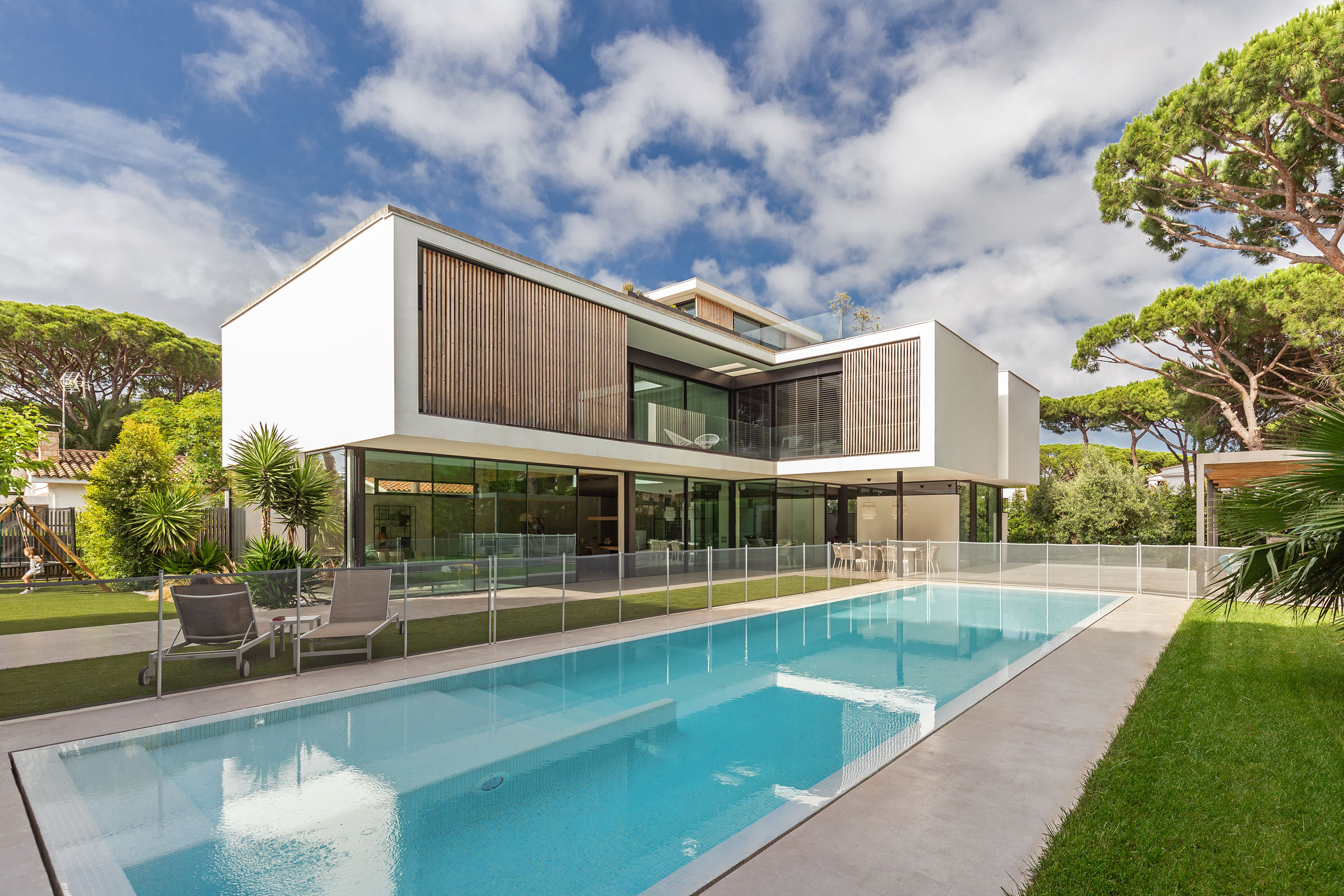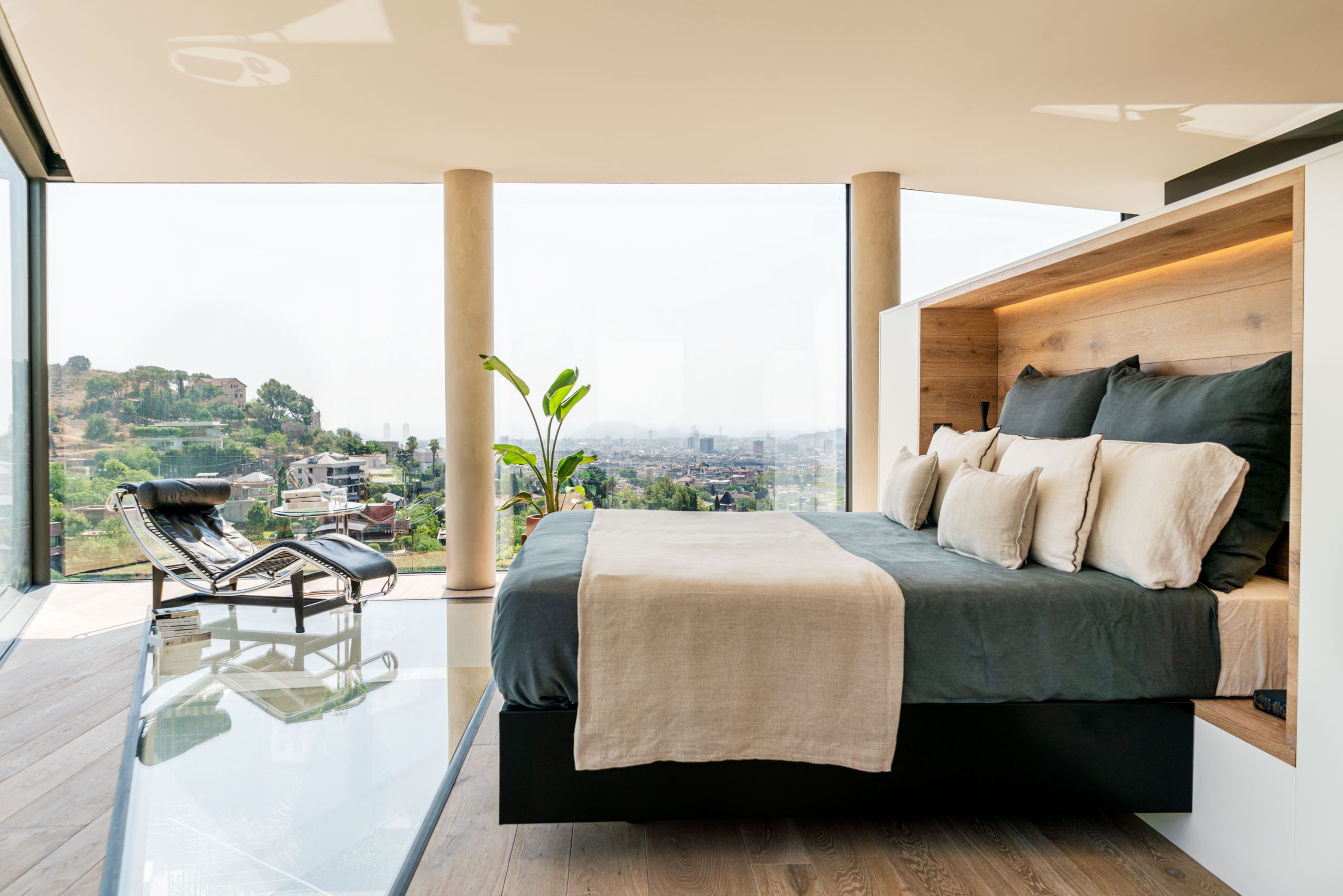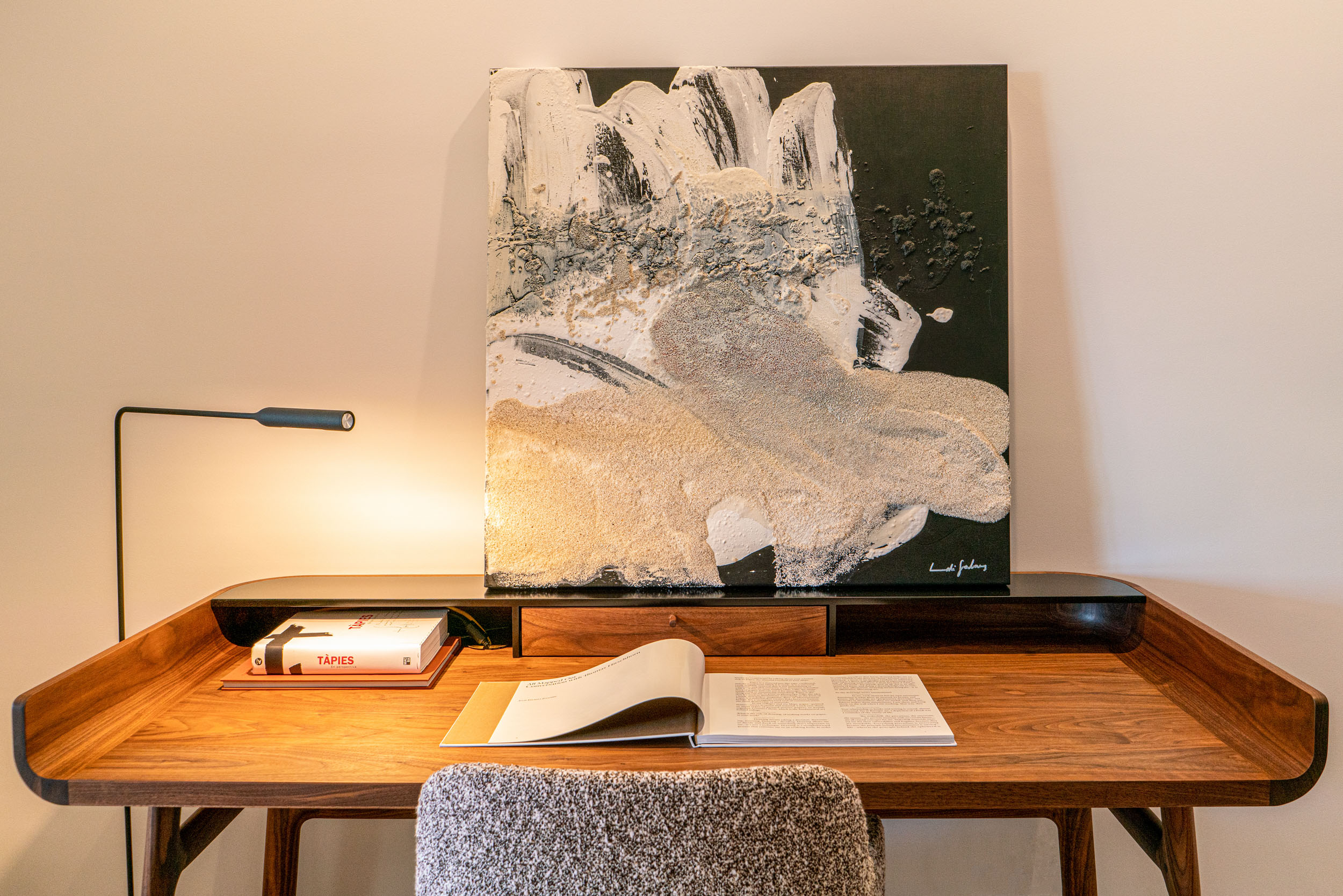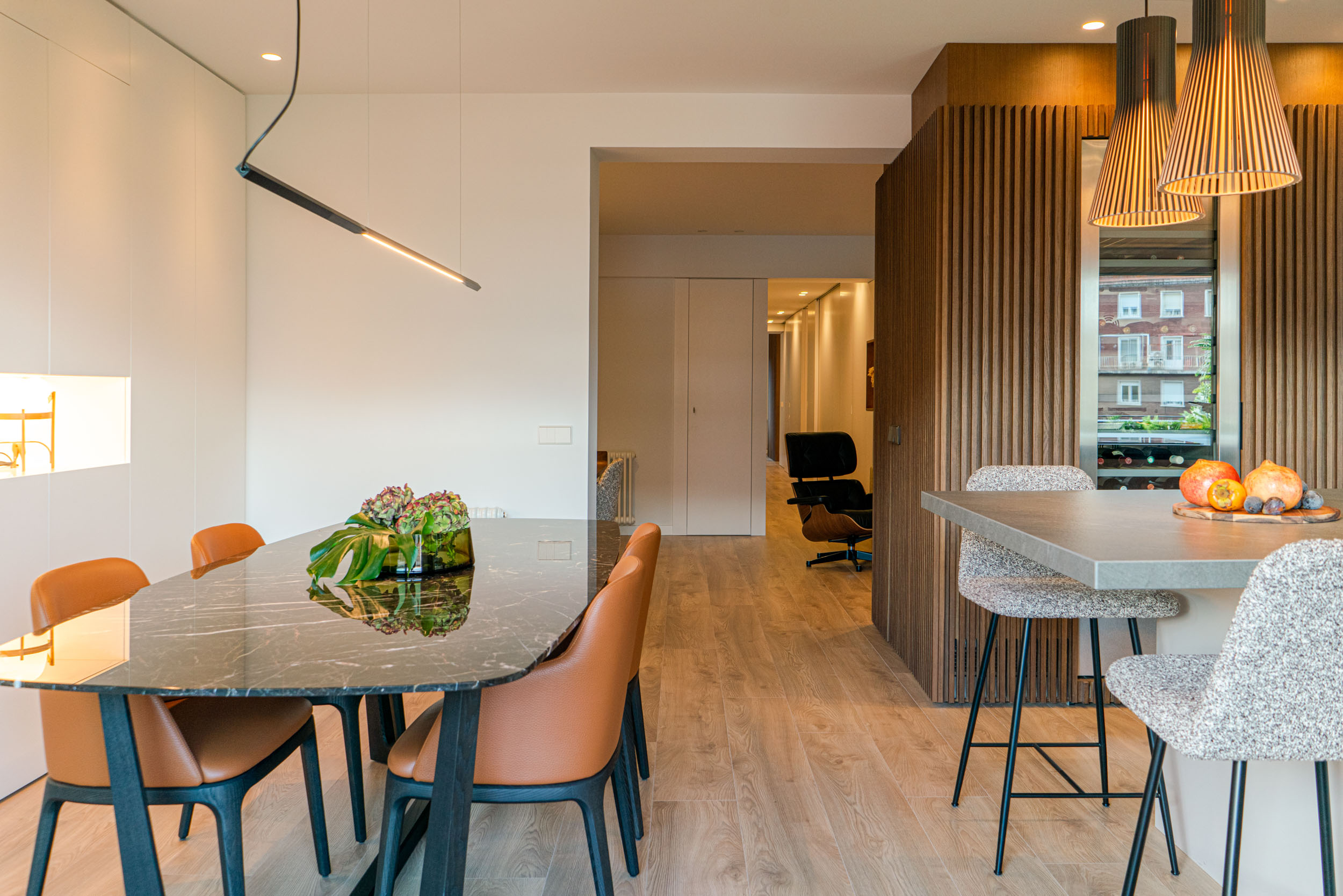Combining Different Flooring: How to Achieve the Perfect Fusion?
General
The choice of flooring can radically transform the appearance and perception of a home. If you have an open-plan home, combining different types of flooring is a foolproof option for zoning the space in an aesthetic and economical way. We explain all the tricks you need to know to achieve a smooth transition between different types of flooring and ensure the resistance, durability, and elegance of your home's floors.
Keys to combining two different floors in one space
- Aesthetic coherence: when combining two types of flooring, it is essential to ensure that the combination will respect the visual harmony of your home. Avoid sudden contrasts that could clash with the rest of the interior design.
- A smooth transition: between two types of soil will be the key to success to achieve a balanced and fluid fusion. Take care of the installation and design details to avoid unevenness or abrupt corners that can become visual obstacles and break the continuity of the space.
- Contrast of materials and textures: When combining two types of flooring, it is important to consider both the material and texture of each. For the contrast between the two different floors to be attractive, it will be essential for their materials and textures to complement each other.
- Functionality: Aesthetics are very important, yes. But it should always go hand in hand with functionality. Before combining two types of flooring, consider the use and specific needs of the space where you will incorporate them. For example, in high-traffic or humid areas, it is important to select resistant and easy-to-clean materials.
- Professional advice: Considering the complexity of combining two different floors, we recommend seeking guidance and advice from architecture and interior design professionals. Get in touch with us for personalized advice, and we will help you ensure a satisfactory and well-executed final result.
Ideas for combining floors at home
Floor transition between the kitchen and dining area
The kitchen and dining area are two areas that are often the heart of any home. Therefore, it is crucial that the transition between these two spaces is harmonious, fluid, and elegant. If you have, for example, an open kitchen to the living room, combining floors is an effective resource for zoning and defining the space.
In any case, if you have decided to incorporate two types of flooring into your home, make sure that the materials they are made of are resistant and easy to maintain. Opt for microcement floors for interiors, or stone or porcelain tile flooring. And if you want to add extra warmth and comfort, natural wood parquet is a classic choice that never fails.
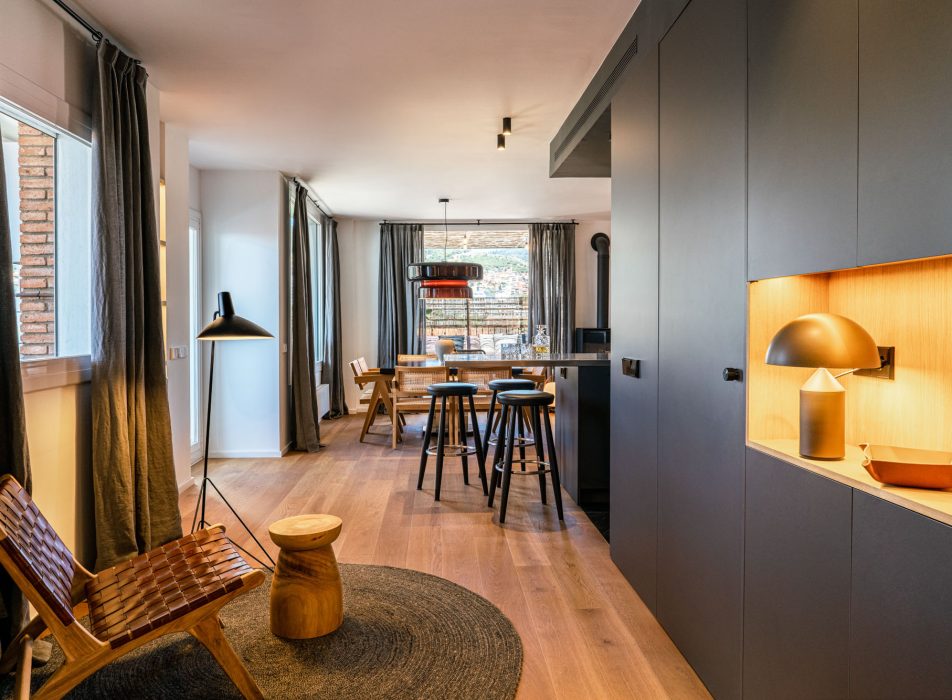

Different floors between the bedroom and the bathroom
The bathroom is a space where moisture greatly influences its durability. Knowing this, we recommend installing a microcement floor, which is highly resistant to water and easy to maintain.
At the same time, to dress the floors of the bedrooms, you can play with textures and patterns, using rugs on parquet or laminate flooring. This combination will provide you with extra comfort when you wake up in the morning.
Carpet effect with floor change
This versatile and creative technique consists of visually delimiting a specific area within a space. It is often applied to areas such as the living room or dining room, and is done by changing the flooring material.
To implement this effect, a different floor material is used around the perimeter of the designated area. For example, in a living room with a tiled floor, a wooden frame is placed around the main area and filled with a parquet floor, laminate or any other material that contrasts with the surrounding floor.
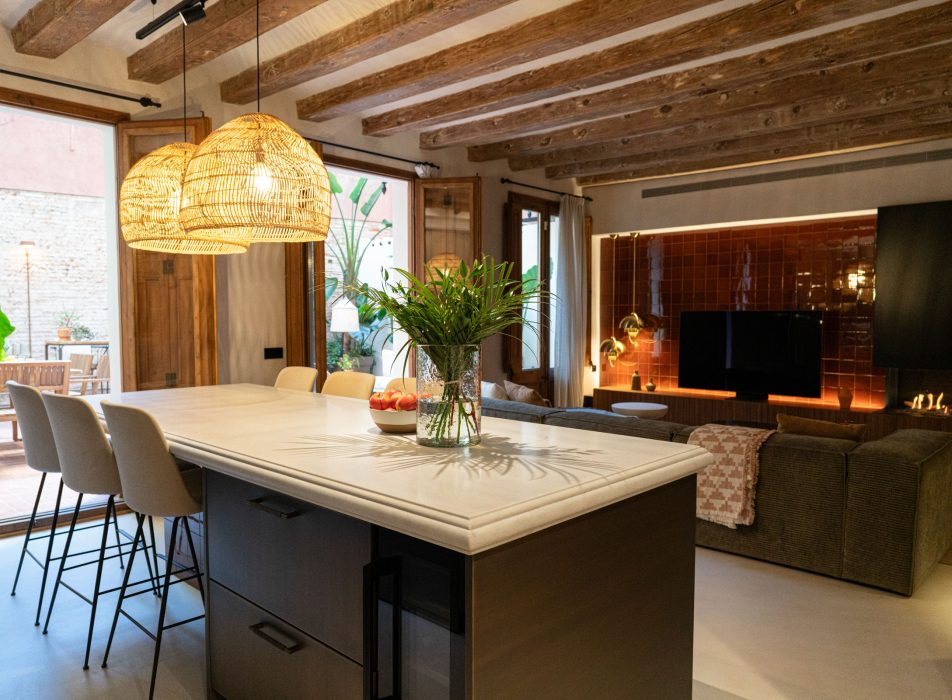
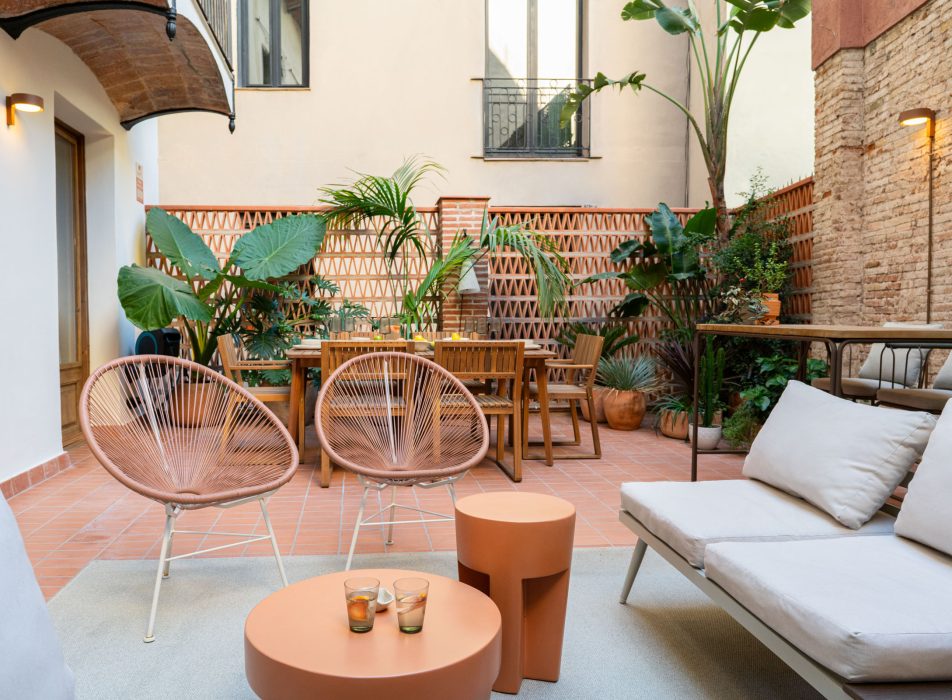
Indoor and outdoor floor transition
Decorating terraces and connecting the interior space with the exterior is quite a challenge. To ensure that the floor fluidly connects these two areas, use materials that adapt to both outdoor and indoor environments. Also make sure that the selected materials are resistant to outdoor conditions and easy to maintain, to ensure their durability over time.
The most resistant and easy-to-maintain floors, such as natural stone or wood, will be your great allies.
Combining two types of flooring in your home can be a challenge that you will successfully achieve with proper planning and guidance. Opting for this aesthetic resource will be a wise decision that will surely improve the aesthetics and functionality of your home. Contact us and we will walk you through the design process of your home, or visit our social platforms to get inspiration from our projects.
